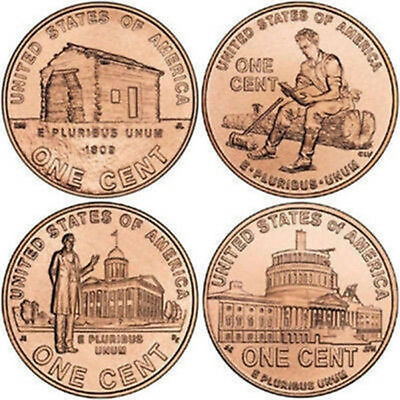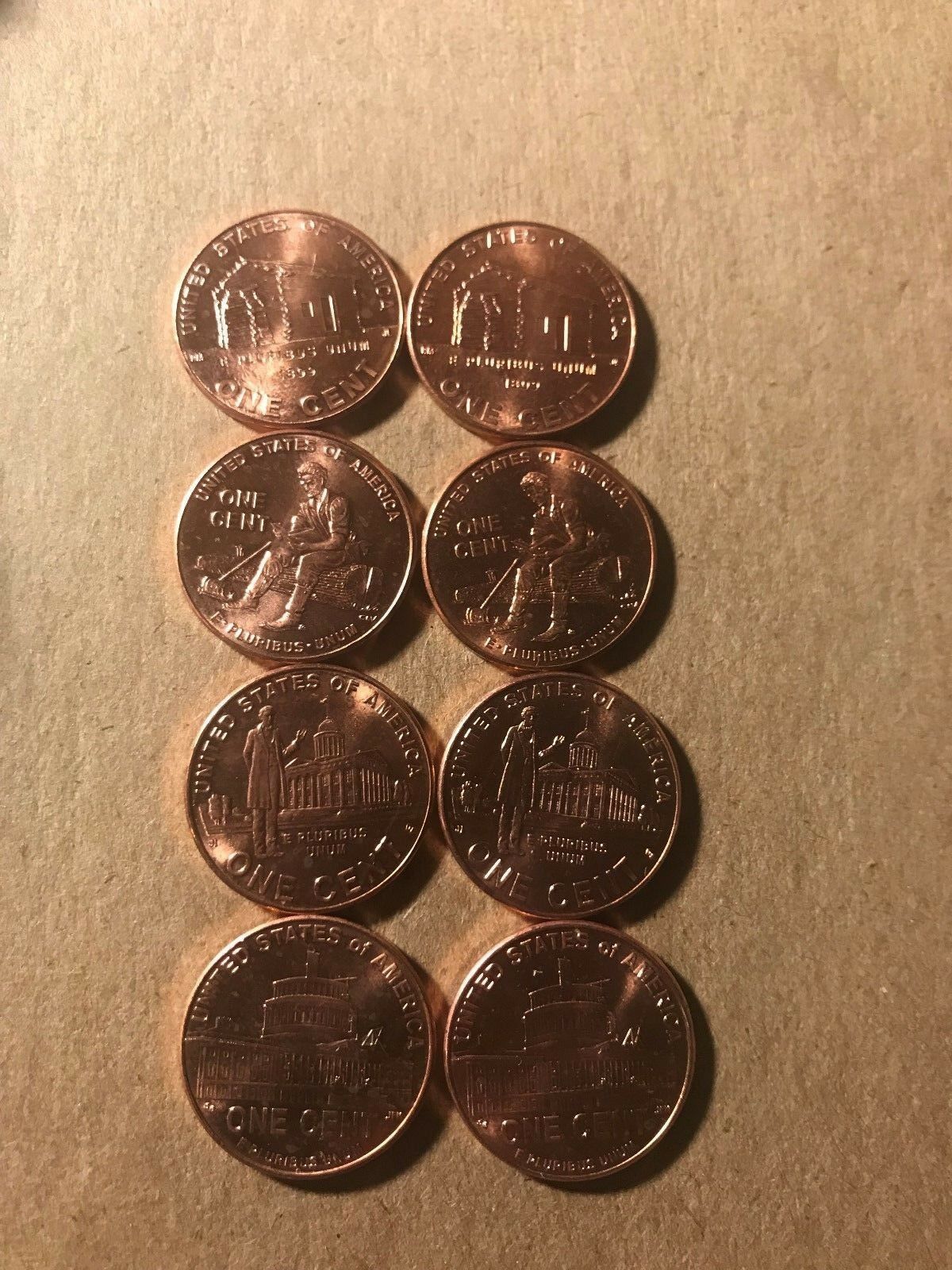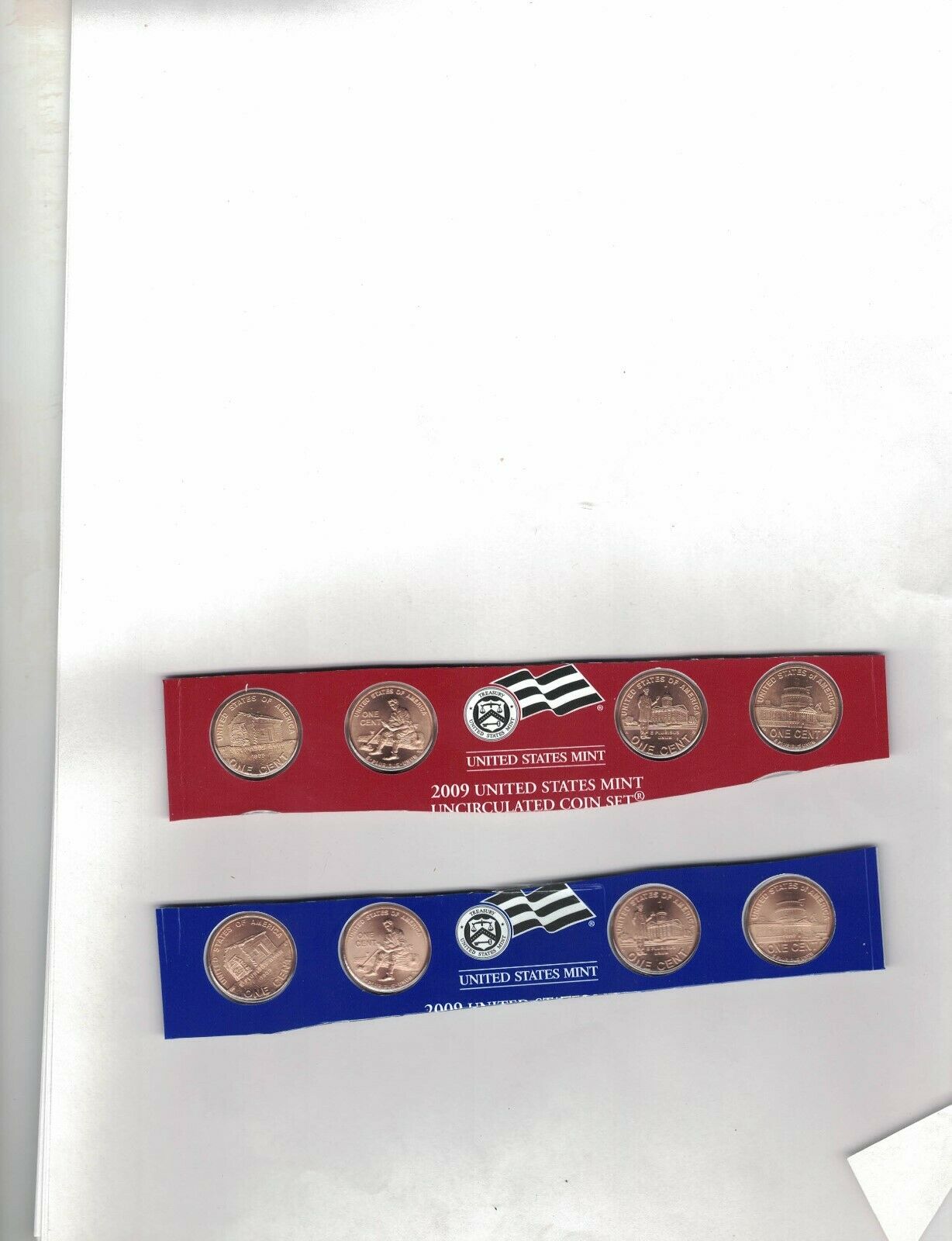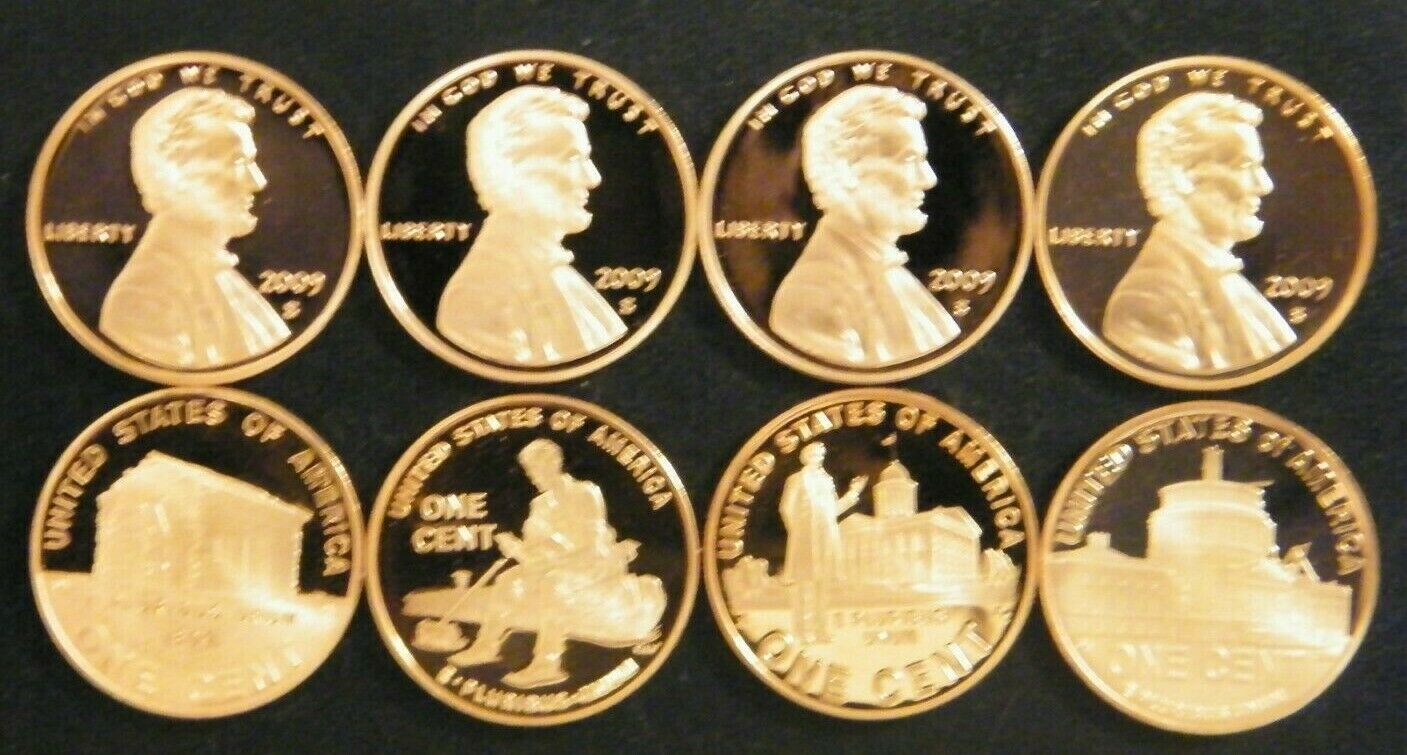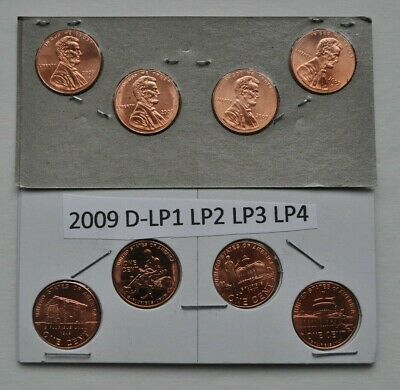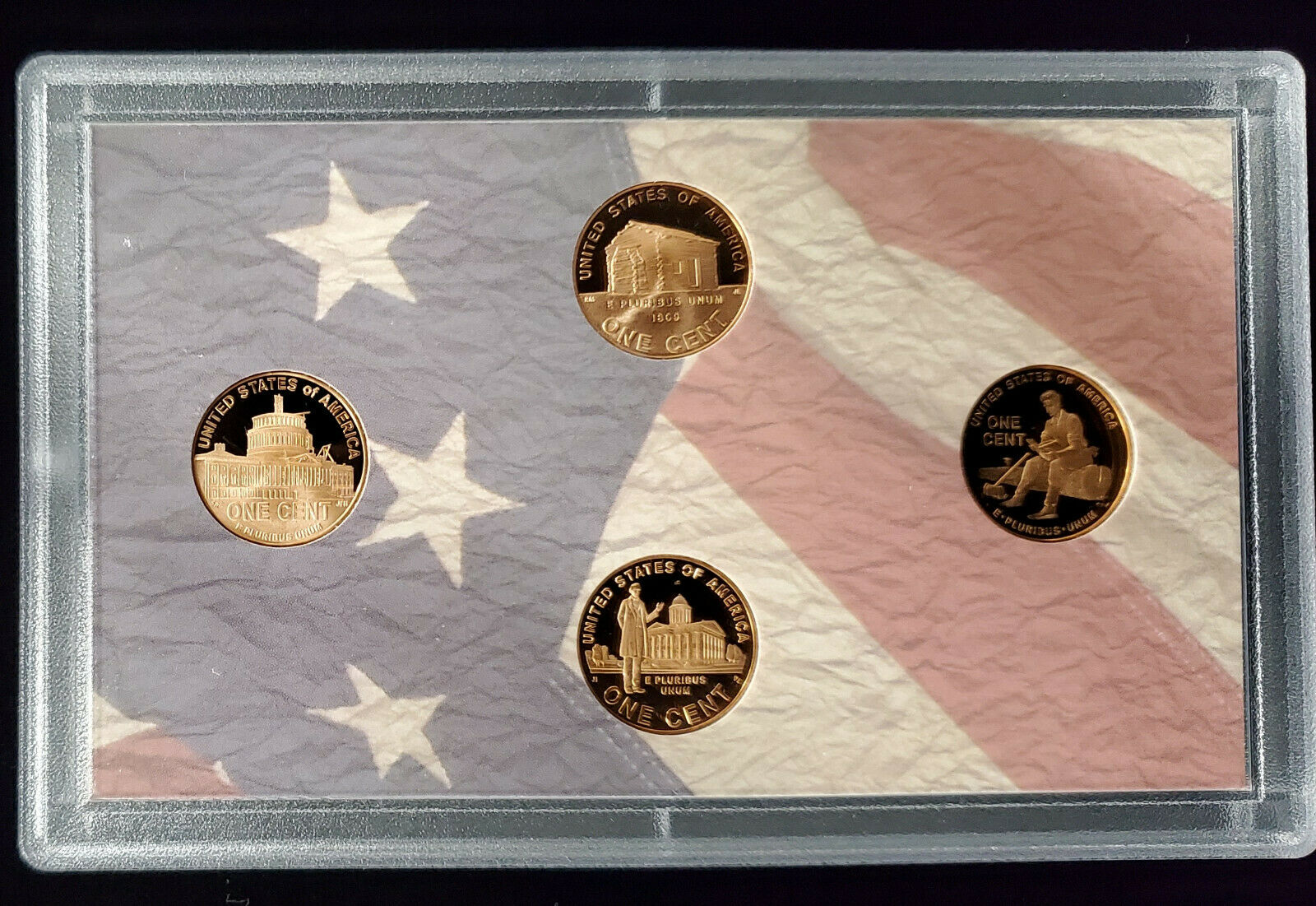-40%
2009 S GEM BU PROOF Lincoln Professional Life UNCIRCULATED PENNY PF COIN #3824
$ 2.1
- Description
- Size Guide
Description
AboutLincoln Memorial design (1959–2008)
Reverses of the
Lincoln cent
A Wheat penny
Wheat (1909–1958)
Lincoln Memorial penny
Lincoln Memorial (1959–2008)
Birth and early childhood in Kentucky penny, 2009
Birth and early childhood in Kentucky (Lincoln Bicentennial, 2009)
Lincoln Bicentennial Formative Years in Indiana penny, 2009
Formative Years in Indiana (Lincoln Bicentennial, 2009)
Lincoln Bicentennial Professional life in Illinois penny, 2009
Professional life in Illinois (Lincoln Bicentennial, 2009)
Lincoln Bicentennial Presidency in DC penny, 2009
Presidency in DC (Lincoln Bicentennial, 2009)
Union shield penny, 2010
Union shield (2010–present)
On Sunday morning, December 21, 1958, President Eisenhower's press secretary, James Hagerty, issued a press release announcing that a new reverse design for the cent would begin production on January 2, 1959. The new design, by Frank Gasparro, had been developed by the Treasury in consultation with the Lincoln Sesquicentennial Commission. Approved by the President and by Secretary of the Treasury Robert B. Anderson, the new design featured the Lincoln Memorial in Washington, D.C. The redesign came as a complete surprise, as word of the proposal had not been leaked.[54] The coin was officially released on February 12, 1959, the 150th anniversary of Lincoln's birth, although some pieces entered circulation early.[55]
The selected design was the result of an internal competition among the Mint's engravers. Gasparro did not go in person to see the Lincoln Memorial, a place he had never visited. According to Anderson, Gasparro created an "impressive" image of the Memorial,[56] however, Taxay states that the design "looks at first glance like a trolley car".[57] Numismatic historian Walter Breen describes Gasparro's design as "an artistic disaster".[58]
There was considerable public excitement over the "small date" and "large date" 1960 and 1960-D cents, with the small dates being the rarer. The Mint feared the interior of the zero as punched into the die would break away during the coining process, giving the zero a filled-in appearance. To reduce the chance of this happening, the Mint enlarged the date. Sealed bags of 1960 cents, with a face value of , sold for as much as ,000. Prices for the small date coins, of which approximately two million had been struck at Philadelphia, continued to increase until 1964, when the bubble burst.[59] Approximately 500 million of the Denver small date (out of a total mintage of 1.5 billion) were struck, and are not particularly rare.[60] Bowers points out that there are enough of the 1960 Philadelphia small date known to supply every member of the American Numismatic Association, and every subscriber to the major coin periodicals.[61]
In 1964, a rise in the price of silver led to silver coins being hoarded by the public. With change short, hoarding extended to the cent, which also became scarce in circulation. Mint Director Eva Adams felt that part of the reason for the shortage was coin collectors taking pieces from circulation, and Adams ordered that mintmarks no longer appear on coins. Coins continued to be dated 1964 until the end of 1965, using authority given by the Coinage Act of 1965, and almost all 1965 cents were actually struck in 1966.[62] The Mint began striking clad dimes and quarters, replacing the silver pieces which the public would not spend. Although coinage had been stopped at San Francisco after 1955, the California facility began to issue cents again, though without mintmarks.[63] In 1968, mintmarks were restored to the cent. San Francisco began minting a limited number of circulation strikes[64] (which it would cease to do after 1974)[65] and began striking proof coins.[64]
Proof-quality Lincoln penny with cameo effect, obverse
Copper prices began to rise in 1973, to such an extent that the intrinsic value of the coin approached a cent, and citizens began to hoard cents, hoping to realize a profit. The Mint decided to switch to an aluminum cent. Over a million and a half such pieces were struck in the second half of 1973, though they were dated 1974. At congressional hearings, representatives of the vending machine industry testified that aluminum cents would jam their equipment, and the Mint backed away from its proposal.[66] Mint director Mary Brooks sought the return of samples which had been distributed to members of Congress, but 14 remained missing, with the recipients affecting not to know what had become of them. One aluminum cent was donated to the Smithsonian Institution for the National Numismatic Collection;[67][68] another was reportedly found by a US Capitol Police Officer.[67]
In 1981, faced with another rise in the price of copper, the Mint decided to change the composition of the cent to copper-covered zinc. After contract difficulties and production delays, the first such cents were struck at the West Point Mint (without mintmark) on January 7, 1982. Denver did not convert to the new composition until October 21.[69] A few pennies were struck by error in brass dated 1983 and are extremely rare.[70] A number of small changes were made to the obverse design in the 1990s and early 2000s

